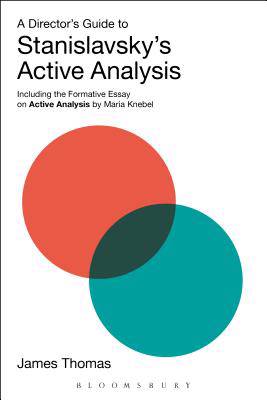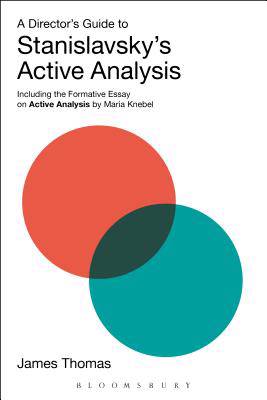
- Afhalen na 1 uur in een winkel met voorraad
- Gratis thuislevering in België vanaf € 30
- Ruim aanbod met 7 miljoen producten
- Afhalen na 1 uur in een winkel met voorraad
- Gratis thuislevering in België vanaf € 30
- Ruim aanbod met 7 miljoen producten
Zoeken
A Director's Guide to Stanislavsky's Active Analysis
Including the Formative Essay on Active Analysis by Maria Knebel
James Thomas
Paperback | Engels
€ 62,95
+ 125 punten
Uitvoering
Omschrijving
A Director's Guide to Stanislavsky's Active Analysis describes Active Analysis, the innovative rehearsal method Stanislavsky formulated in his final years. By uniting 'mental analysis' and 'études', Active Analysis puts an end to the problem of mind-body dualism and formalized text memorization that traditional rehearsal methods foster.
The book describes Active Analysis both practically and conceptually; Part One guides the reader through the entire process of Active Analysis, using A Midsummer Night's Dream as a practical reference point. The inspiration here is the work of the Russian director Anatoly Efros, whose pioneering work led the way for a reawakening of theatre in post-Soviet Russia. Part Two is the first English translation of Maria Knebel's foundational article about Active Analysis. Knebel was hand-selected by Stanislavsky to carry his final work forward in unadulterated form for succeeding generations of directors and actors.
A Director's Guide to Stanislavsky's Active Analysisprovides the first detailed explanation of Active Analysis from the director's perspective, while also meeting the needs of actors who seek to enhance their creative involvement in the process of play production.
The book describes Active Analysis both practically and conceptually; Part One guides the reader through the entire process of Active Analysis, using A Midsummer Night's Dream as a practical reference point. The inspiration here is the work of the Russian director Anatoly Efros, whose pioneering work led the way for a reawakening of theatre in post-Soviet Russia. Part Two is the first English translation of Maria Knebel's foundational article about Active Analysis. Knebel was hand-selected by Stanislavsky to carry his final work forward in unadulterated form for succeeding generations of directors and actors.
A Director's Guide to Stanislavsky's Active Analysisprovides the first detailed explanation of Active Analysis from the director's perspective, while also meeting the needs of actors who seek to enhance their creative involvement in the process of play production.
Specificaties
Betrokkenen
- Auteur(s):
- Uitgeverij:
Inhoud
- Aantal bladzijden:
- 192
- Taal:
- Engels
Eigenschappen
- Productcode (EAN):
- 9781474256599
- Verschijningsdatum:
- 8/09/2016
- Uitvoering:
- Paperback
- Formaat:
- Trade paperback (VS)
- Afmetingen:
- 137 mm x 213 mm
- Gewicht:
- 249 g

Alleen bij Standaard Boekhandel
+ 125 punten op je klantenkaart van Standaard Boekhandel
Beoordelingen
We publiceren alleen reviews die voldoen aan de voorwaarden voor reviews. Bekijk onze voorwaarden voor reviews.








